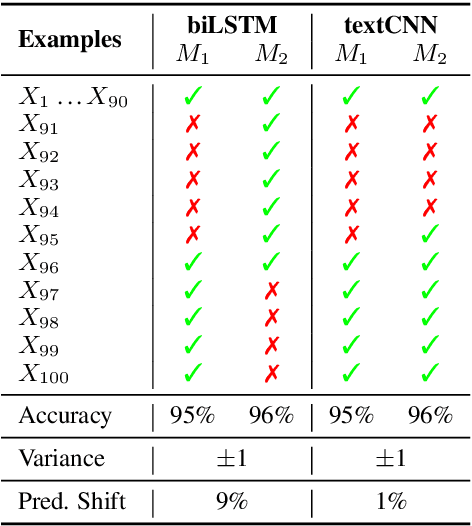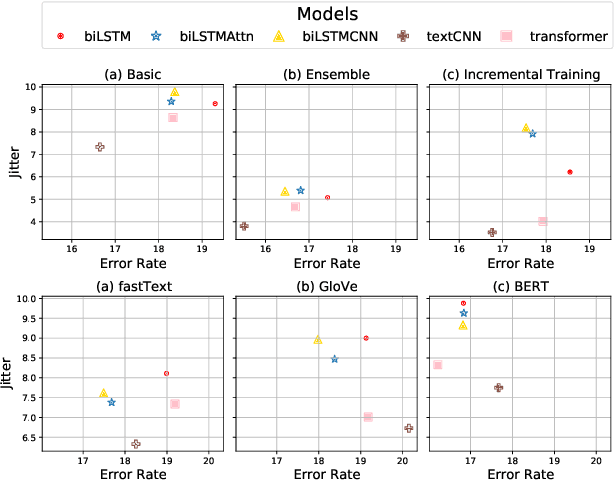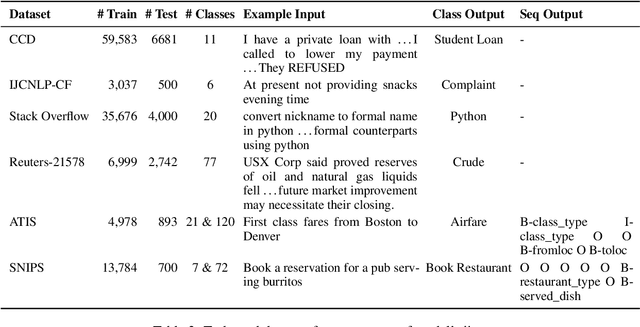Sachin Agarwal
Languages You Know Influence Those You Learn: Impact of Language Characteristics on Multi-Lingual Text-to-Text Transfer
Dec 04, 2022



Abstract:Multi-lingual language models (LM), such as mBERT, XLM-R, mT5, mBART, have been remarkably successful in enabling natural language tasks in low-resource languages through cross-lingual transfer from high-resource ones. In this work, we try to better understand how such models, specifically mT5, transfer *any* linguistic and semantic knowledge across languages, even though no explicit cross-lingual signals are provided during pre-training. Rather, only unannotated texts from each language are presented to the model separately and independently of one another, and the model appears to implicitly learn cross-lingual connections. This raises several questions that motivate our study, such as: Are the cross-lingual connections between every language pair equally strong? What properties of source and target language impact the strength of cross-lingual transfer? Can we quantify the impact of those properties on the cross-lingual transfer? In our investigation, we analyze a pre-trained mT5 to discover the attributes of cross-lingual connections learned by the model. Through a statistical interpretation framework over 90 language pairs across three tasks, we show that transfer performance can be modeled by a few linguistic and data-derived features. These observations enable us to interpret cross-lingual understanding of the mT5 model. Through these observations, one can favorably choose the best source language for a task, and can anticipate its training data demands. A key finding of this work is that similarity of syntax, morphology and phonology are good predictors of cross-lingual transfer, significantly more than just the lexical similarity of languages. For a given language, we are able to predict zero-shot performance, that increases on a logarithmic scale with the number of few-shot target language data points.
Can Open Domain Question Answering Systems Answer Visual Knowledge Questions?
Feb 09, 2022



Abstract:The task of Outside Knowledge Visual Question Answering (OKVQA) requires an automatic system to answer natural language questions about pictures and images using external knowledge. We observe that many visual questions, which contain deictic referential phrases referring to entities in the image, can be rewritten as "non-grounded" questions and can be answered by existing text-based question answering systems. This allows for the reuse of existing text-based Open Domain Question Answering (QA) Systems for visual question answering. In this work, we propose a potentially data-efficient approach that reuses existing systems for (a) image analysis, (b) question rewriting, and (c) text-based question answering to answer such visual questions. Given an image and a question pertaining to that image (a visual question), we first extract the entities present in the image using pre-trained object and scene classifiers. Using these detected entities, the visual questions can be rewritten so as to be answerable by open domain QA systems. We explore two rewriting strategies: (1) an unsupervised method using BERT for masking and rewriting, and (2) a weakly supervised approach that combines adaptive rewriting and reinforcement learning techniques to use the implicit feedback from the QA system. We test our strategies on the publicly available OKVQA dataset and obtain a competitive performance with state-of-the-art models while using only 10% of the training data.
Model Stability with Continuous Data Updates
Jan 14, 2022



Abstract:In this paper, we study the "stability" of machine learning (ML) models within the context of larger, complex NLP systems with continuous training data updates. For this study, we propose a methodology for the assessment of model stability (which we refer to as jitter under various experimental conditions. We find that model design choices, including network architecture and input representation, have a critical impact on stability through experiments on four text classification tasks and two sequence labeling tasks. In classification tasks, non-RNN-based models are observed to be more stable than RNN-based ones, while the encoder-decoder model is less stable in sequence labeling tasks. Moreover, input representations based on pre-trained fastText embeddings contribute to more stability than other choices. We also show that two learning strategies -- ensemble models and incremental training -- have a significant influence on stability. We recommend ML model designers account for trade-offs in accuracy and jitter when making modeling choices.
 Add to Chrome
Add to Chrome Add to Firefox
Add to Firefox Add to Edge
Add to Edge